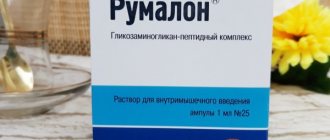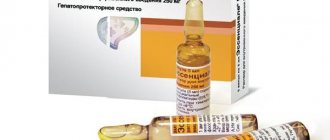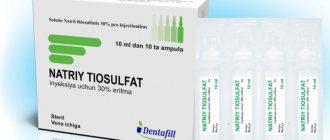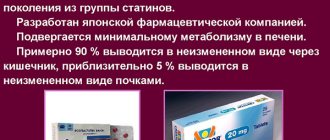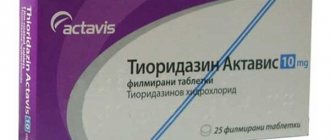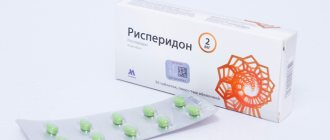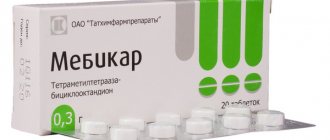Let's consider analogs of Voltaren, because this is a high-quality, but expensive drug based on a non-steroidal substance called diclofenac sodium, used to treat mainly rheumatoid diseases. It has pronounced analgesic (pain-relieving), sustained anti-inflammatory and sustained antipyretic effects.
In the treatment of rheumatic diseases, the drug significantly reduces joint pain at rest and pain during movement, which exhausts the patient and prevents free movement, eliminates or significantly reduces morning stiffness, and improves the functional state. These properties make Voltaren and other diclofenac-based drugs practically necessary when drawing up a treatment regimen for patients with diseases of the musculoskeletal system (diprospan helps).
Therapeutic effect
Voltaren injections have earned positive reviews due to their rapid pain relief and non-hormonal origin.
After intramuscular administration, the active substance, diclofenac sodium, quickly penetrates into all tissues and fluids of the body. Bypasses the blood-brain and placental barriers and passes into breast milk. The therapeutic effect is observed after 10–15 minutes. If intravenous use is necessary, the result is felt instantly.
In both cases, the substance enters the liver, where it forms metabolites (chemical compounds). 3-4 hours after the injection, half the dose is excreted from the body through the kidneys.
Pharmacological group
The drug Voltaren is classified as a non-steroidal anti-inflammatory drug.
Among the effects of the substance diclofenac in its composition:
- analgesic;
- anti-inflammatory;
- antipyretic.
Diclofenac slows down the biological production of prostaglandins.
When administered intramuscularly, absorption occurs very quickly. The maximum concentration is reached within 20 minutes after administration. If the dosage is observed, the drug does not accumulate.
The ability to establish bonds with blood proteins is 99.7%.
The content of diclofenac in synovial fluid is higher than in blood serum. There, the maximum concentration is reached 2-4 hours later than in plasma.
A small amount is excreted in breast milk.
Metabolism of the substance occurs through glucuronidation, phenolic metabolites are formed, which in turn are converted into glucuronide conjugates, two of which are endowed with biological activity. Approximately 60% is excreted in the urine in a metabolized form. Only about 1% of diclofenac is excreted unchanged.
List of indications
People claim that the medicine is used mainly for exacerbations of pathologies of the musculoskeletal system. Many people are interested in instructions and reviews about Voltaren injections. The list of indications includes:
- arthritis, including rheumatoid;
- attack of gout;
- osteoarthritis;
- spondyloarthrosis;
- osteochondrosis;
- intervertebral hernia;
- inflammation of the pelvic organs;
- symptoms of renal, hepatic colic;
- headaches, migraines;
- the presence of swollen postoperative scars.
According to the patients and doctors themselves, injections are effective in most inflammatory processes that occur in the body, so the range of applications of Voltaren is much wider.
Areas of application of Voltaren and its substitutes
Voltaren is also very effective for moderate and severe rheumatic pain accompanied by inflammation and fever, which expands the scope of its application. The pain is significantly relieved a quarter of an hour to half an hour after using the drug, especially if the drug was administered by injection. For example, the drug has proven its effectiveness in relieving swelling and reducing pain in the post-traumatic and post-operative period.
The wounds do not bother the patient as much after using Voltaren and are fully scarred. When combined with opioids, voltaren reduces the patient's need to use the latter due to its ability to quickly, sustainably and lastingly relieve pain. In addition, Voltaren reliably eliminates headaches due to migraines of various origins.
When are Voltaren and Diclofenac used?
Voltaren or diclofenac sodium are used for the following health problems:
- Diseases of the musculoskeletal system associated with inflammatory and/or degenerative processes, accompanied by limited mobility;
- Diseases of the spine, characterized by severe pain and difficulty in movement;
- Myalgia as a symptom, that is, muscle pain, including non-inflammatory nature;
- Neuralgia as a symptom, including inflammatory and non-inflammatory processes in the peripheral nervous system;
- Sciatica as a symptom of any underlying disease;
- Arthralgia as a symptom in most diseases of the musculoskeletal system of a non-infectious nature;
- Colic - biliary, renal, less often hepatic;
- Migraine, including severe attacks;
- Post-traumatic and post-operative periods with swelling and pain of penetrating, non-penetrating and surgical wounds.
Diclofenac has a wider range of applications. In particular, it is indicated locally in the following cases:
- Prevention of macular edema during lens removal and implantation;
- Inhibiting miosis or slowing pupil constriction during cataract surgery;
- Inflammatory diseases of the organs of vision not associated with infection;
- Post-traumatic conditions of the eyes after injuries.
Voltaren is not used in ophthalmology.
This is the main difference between Voltaren and diclofenac in terms of pharmacological effects. The spectrum of effects of diclofenac and voltaren, created on its basis, is similar.
Diclofenac is also used in veterinary medicine, especially in the treatment of arthritis, arthrosis, and injuries. Voltaren is prescribed less frequently for veterinary purposes. Most likely this is due to the difference in the cost of drugs.
Popular The more effective way to replace Mydocalm: injections and tablets
Voltaren release forms
Voltaren is best known to patients in the form of an injection solution, packaged in glass ampoules, as well as in the form of gels applied to the skin in the area of pain or inflammation. Less commonly used are tablets and rectal suppositories with this drug. Even more rarely, patches for applications and sprays sprayed externally are used. An alternative to tablets is powders for preparing a suspension. It is believed, but this has not been reliably proven clinically, that suspensions are easier to tolerate by the digestive organs than tablets.
Gels and sprays can be used for quite a long time, if this does not lead to severe allergic reactions. In case of severe reactions at the site of application of the drug, you need to select, together with your doctor and allergist, a different form of the drug or its analogue. Allergies occur not only from the active substance, but also from auxiliary components, so before replacing the drug, you need to determine the allergen itself.
Voltaren injections are not indicated for longer than two days, although traditionally injections were considered safer for the body’s excretory system. If the effect of therapy cannot be achieved within two days, voltaren injections are replaced with the same drug in a different form. In hospital or outpatient treatment under the supervision of a physician, suppositories or tablets are usually used. Gels, sprays and patches are used more often for non-acute conditions.
Diclofenac is available in the form of tablets with general and prolonged action, gels and ointments, rectal suppositories, solutions for injections, eye drops. The choice of drug form depends on the goals and therapeutic effect.
Who prescribes Voltaren
Voltaren can prescribe:
- surgeon to eliminate pain and swelling after injuries and operations;
- rheumatologist and orthopedist in the treatment and relief of symptoms of musculoskeletal diseases;
- neurologist for neuralgia caused by diseases of the spine;
- nephrologist for renal colic;
- hepatologist for hepatic or biliary colic;
- other doctors, including therapist, pediatrician. Diclofenac is also prescribed by ophthalmologists for eye injuries, before and after surgery.
Who is prohibited
Patients are often put off by the extensive list of contraindications specified in the instructions for using Voltaren injections. Reviews from doctors say that when used correctly, the risk is minimal.
The product should not be injected into children, pregnant or lactating women.
The list of prohibitions includes the following pathologies:
- cerebral atherosclerosis;
- ischemic attacks;
- previous myocardial infarction, stroke;
- operations performed using a cardiopulmonary bypass device;
- risk of bleeding;
- ulcerative lesions of the gastrointestinal tract, Crohn's disease;
- renal, liver, heart failure;
- individual intolerance to components.
Contraindications
Voltaren in injection form has the following list of contraindications:
- stomach or duodenal ulcer;
- bronchial asthma as a side effect resulting from the use of NSAIDs;
- urticaria as a consequence of the use of non-steroidal anti-inflammatory drugs;
- acute rhinitis due to taking NSAIDs;
- age under 18 years;
- pregnancy.
The drug is prescribed with caution for:
- liver dysfunction;
- hepatic porphyria;
- COPD;
- chronic infectious lesions of the respiratory system;
- cardiovascular pathologies;
- diabetes mellitus;
- hypertension;
- treatment of patients who smoke or abuse alcohol;
- old age;
- defects in the sphere of hemostasis;
- treatment of patients susceptible to the development of thrombosis.
Interaction
Most patients do not know whether Voltaren injections treat or relieve pain. Reviews indicate that people prescribe medication to eliminate uncomfortable conditions, without thinking about its effect on the body.
The injected solution blocks the enzyme cyclooxygenase, thereby eliminating inflammation, pain and redness. Concomitant use of other medications may interfere with this process and can be dangerous.
Undesirable combinations include Voltaren injections and the use of:
- acetamphytamine, cyclosporine, tacrolimus (have a negative effect on the kidneys);
- salicylic acid (there is a risk of increased side effects);
- quinolones (convulsions occur);
- cardiac glycosides (the risk of developing digitalis intoxication increases);
- antacids (the concentration of the active substance in the blood increases);
- insulin (sugar levels decrease);
- corticotropin, colchicine, drugs containing calcium (negative effects on the digestive system);
- anticoagulants (increases the risk of bleeding).
Given this information, it is better to avoid self-medication.
Description and composition
Voltaren solution is a clear, colorless or slightly yellow liquid. The ampoule contains 3 ml of the drug, 1 ml - 25 mg of diclofenac and 75 mg in a full bottle.
The following components have been added as additional components:
- sodium disulfide;
- propylene glycol;
- phenylcarbinol;
- sodium hydroxide;
- mannitol
Auxiliary ingredients give the solution the necessary rheological properties and accelerate the distribution of diclofenac throughout the tissues of the body.
Side effects and overdose
Patient reviews of Voltaren injections rarely contain information about worsening well-being. If the medicine was prescribed by a doctor, taking into account contraindications and additional medications, then the risk of developing side effects is small.
During treatment you may experience:
- cholestatic jaundice;
- toxic liver damage (increased levels of AST, ALT);
- inflammation of the meninges;
- confusion;
- hallucinations;
- depression;
- double vision and fog in the eyes;
- increased heart rate;
- decreased blood pressure;
- heart failure;
- erythema;
- hair loss;
- the appearance of watery rashes on the skin;
- gastritis, pancreatitis;
- decreased appetite or complete aversion to food;
- weight loss;
- bronchospasm, inflammation of the pulmonary alveoli;
- internal bleeding;
- impotence (rare);
- inflammation of the kidneys and their papillae, development of organ failure;
- stomatitis and so on.
If the recommended dosage is exceeded, severe abdominal pain, nausea, and vomiting occur. Side effects increase. The patient needs to call a doctor to prescribe symptomatic therapy. If the dose is exceeded many times and the patient's condition worsens, call an ambulance.
Side effects
During the use of the composition, the following side effects may occur:
- post-injection abscess;
- thrombocytopenia;
- leukopenia;
- hemolytic anemia;
- aplastic anemia;
- agranulocytosis;
- hypersensitivity reactions;
- anaphylactic reactions;
- decreased blood pressure;
- states of shock;
- swelling of the face;
- disorientation;
- depression;
- insomnia;
- dreams;
- increased irritability;
- mental disorders;
- headache;
- drowsiness and tearfulness;
- meningitis;
- visual impairment;
- vertigo;
- hearing impairment;
- chest pain;
- heart attack;
- pathologies of the cardiovascular system;
- stomatitis;
- glossitis;
- exacerbation of ulcerative colitis;
- Crohn's disease;
- constipation;
- pancreatitis;
- hepatitis;
- jaundice;
- bullous dermatitis;
- eczema;
- erythema;
- skin rash;
- hives;
- itching;
- alopecia.
The listed side effects occur with varying degrees of probability. A specialist will be able to minimize the risk of their manifestation in a particular patient.
Recommendations
Reviews from doctors about Voltaren injections report that people practicing self-medication experienced multiple negative reactions.
To reduce this risk, they need to be aware that during therapy:
- it is prohibited to combine it with other drugs from the non-steroidal group;
- Dosages should be observed and long courses should be avoided;
- the first dose should be minimal to avoid allergic reactions;
- laboratory monitoring of indicators indicating the condition of the liver and kidneys is necessary (in case of long-term use);
- inhibition of the nervous system may occur, so people whose activities are associated with increased concentration should avoid using the drug.
The majority of patients using Voltaren are elderly people. Doctors warn that this category of people should be treated only under the supervision of specialists.
special instructions
The list of special instructions can be presented as follows:
- Prolonged use of the product in high doses is prohibited.
- It is prohibited to combine the use of the composition with other non-steroidal anti-inflammatory drugs of any dosage forms.
- Doses for elderly patients are selected privately.
- Before starting to use the composition, it is worth conducting a test to determine the body’s sensitivity to the components.
- It is prohibited to use the composition for inflammatory processes of unknown etiology.
- In case of gastrointestinal pathologies, it is necessary to take medications that reduce the acidity of gastric secretions.
- During long-term treatment, it is worth regularly monitoring the functional activity of the liver.
- The use of the composition in the early stages of pregnancy is possible if the expected benefit to the mother outweighs the harm to the child.
Average cost and analogues
The medicine is dispensed in a cardboard box containing 5 ampoules of 3 ml each. Each contains 75 mg of the drug. The average cost per package is 230–250 rubles, depending on the region of residence.
The most popular analogue of Voltaren is Diclofenac. It is produced by many pharmaceutical companies. The release form is identical. This is a box with 5 ampoules of 3 ml solution. The price starts from 9 rubles per package.
Many people are interested in what is better - Voltaren or Diclofenac (injections). Reviews from patients and doctors differ here. Some believe that an expensive drug is of better quality and rarely causes complications. Others don't see any difference. Doctors explain the higher cost of Voltaren by the degree of purification. The higher it is, the fewer foreign impurities enter the drug, and it is better tolerated by the body.
In practice, everything is individual. Elderly people often prefer cheaper medicine.
Storage conditions
The drug in the form of a solution for intravenous use should be stored at an ambient temperature of 15 to 20 degrees. It is not allowed to store drug residues after opening an ampoule with a solution and violating sterility conditions. The maximum shelf life is 2 years from the date of production. The product should be kept away from children.
The drug is sold freely to the public from pharmacy chains, but its unauthorized use can cause serious health problems.
Patient reviews
People are often interested in whether Voltaren injections cure or relieve pain. Reviews of use by patients claim that the injections have a pronounced analgesic effect, quickly relieve swelling and inflammation, and reduce hyperemia in the pathological area.
Such injections are often given at home to quickly relieve pain. The syringe is inserted deep into the buttock and the solution is released slowly. Intravenously used only in a medical facility.
Patients say that the injections are painless, and relief occurs within 10 minutes. They are most often used for radiculitis, osteochondrosis, arthritis, and severe headaches. Women say that Diclofenac also helps well with gynecological pain after abdominal surgery, including cesarean section.
Athletes resort to the help of Voltaren for various injuries and their consequences.
The drug is also effective for coxarthrosis. Relief of discomfort is observed after 30–40 minutes. Injections relieve pain and inflammation in trophic ulcers.
Most patients praise the drug and say there are no side effects. Individuals leave negative reviews about Voltaren injections. In them they report:
- increased blood pressure;
- pain in the heart;
- arrhythmias;
- intestinal bleeding and so on.
This is often encountered when self-prescribing the drug or concomitantly taking other medications.
Despite the low degree of purification of cheap Diclofenac, people say that it is quite effective and is not inferior in quality to its expensive counterpart. Considering the difference in cost, many patients, especially older ones, prefer to have a cheap product in their medicine cabinet. Young people more often purchase Voltaren.
Reviews from doctors
Doctors agree that Voltaren and other diclofenac-based drugs are effective and proven medications with a strong evidence base. They have been used for many years and are therefore well studied.
Medical reviews of Voltaren injections indicate success in the treatment of acute neuropathic pain that occurs against the background of diseases of the motor system, inflammatory processes, migraines and other things.
Doctors believe that the effect when administered intramuscularly is higher, but when administered intravenously, pain relief occurs faster.
Considering that many patients have certain problems with the gastrointestinal tract, it is recommended to take proton pump inhibitors (Nolpaza, Omez) in parallel with injections. In case of severe pathologies, gastritis, ulcers, it is better to avoid using Diclofenac.
In rare cases, injections are prescribed to pregnant women, but only in the 1st and 2nd trimester. Later use is strictly prohibited, and also during breastfeeding.
Most reviews about Voltaren injections are positive. Both doctors and patients are satisfied with the effect of the drug. The development of negative reactions often affects the digestive tract (mainly the walls of the stomach), because people either do not know about its aggressive effect on the mucous membranes, or ignore the recommendations of the attending physician and do not pay attention to the instructions. Persons undergoing treatment under medical supervision report side effects extremely rarely.
voltaren injection
photo from rodonews.ru
The world's best-selling drugs are antipyretics and pain relievers. With the arrival of winter and the rise in the incidence of ARVI and influenza, their popularity is only growing. The chief clinical pharmacologist of St. Petersburg, Alexander Hadjidis, explained how popular drugs differ from each other and what should be chosen from this variety to reduce fever.
A year ago, during the flu epidemic, St. Petersburg doctors from the Botkin Hospital and the Research Institute of Emergency Medicine named after. Dzhanelidze urged citizens not to lower their temperature with Analgin or Aspirin and take paracetamol strictly according to the instructions. The chief clinical pharmacologist of St. Petersburg, Alexander Hadjidis, does not agree with them. He is confident that if certain restrictions and rules of administration are observed, all these drugs can be safe and very effective. — Combination drugs that contain paracetamol to reduce the symptoms of “colds” are common all over the world (They are well known in Russia under the trade names “Coldrex”, “Fervex”, “TeraFlu” and others - editor’s note*). Are doctors all over the world really so illiterate that they continue to use toxic paracetamol? I don't think so. Medicines that reduce fever and at the same time have an analgesic and anti-inflammatory effect form a whole group of nonsteroidal anti-inflammatory drugs (NSAIDs). The word “non-steroidal” indicates that they are not hormonal, which means they do not have the side effects that steroids have. — There are only a few drugs in the world that can cure ARVI and influenza. But I don’t see the point in taking them: the life cycle (replication) of most viruses is 5-7 days, so the belief that “if a runny nose is treated, it will go away in 7 days, and if not treated, in a week” is fully justified in regarding ARVI. But living and working for a week with a headache and a stuffy nose is difficult. Therefore, it is quite justified to prescribe symptomatic treatment that will relieve discomfort, explains Alexander Hadjidis. “If a person wants to bring down the temperature and get rid of pain, he must understand that these are only symptoms of a disease that he does not treat, but only facilitates its course. Therefore, when choosing a drug in this case, you should evaluate the risk of side effects and the benefits of the drug. Simply put, it is better to endure the fever and pain than to lower the temperature and further harm yourself, says Alexander Hadjidis. What types of antipyretic drugs are there? - Just 25 years ago, there were only 8 main groups of non-steroidal anti-inflammatory drugs, now their number has reached 15, but no one can name their exact number. About 100-150 names of original drugs from this group are registered all over the world, and thousands of generics (reproduced drugs), explains the chief clinical pharmacologist of St. Petersburg. The emerging non-steroidal anti-inflammatory drugs immediately gained popularity and supplanted opioid analgesics, because, unlike them, they did not depress breathing, but, however, also had a less pronounced analgesic effect. All NSAIDs are divided into two groups: “Old” drugs (first generation): acetylsalicylic acid (“Aspirin”, “Citramon”, etc.), ibuprofen (“Ibuprofen”, “Nurofen”, “Naproxen”, “MIG”, etc. .), diclofenac (Voltaren, Diclofenac, Diklak, etc.), indomethacin (Metindol, Movimed), etc., phenylbutazone (Butadion, etc.) For the last 15-20 years, “new” second-generation drugs have appeared on the market - selective cyclooxygenase-2 (COX) inhibitors: meloxicam (“Movalis”, a drug from “old” oxicams that has a selective effect), nimesulide (“Nimesil”, “Nise”, etc. .) and a group of coxibs (celecoxib - Celebrex, etoricoxib - Arcoxia). — The mechanism of action of non-steroidal anti-inflammatory drugs was discovered only in the early 70s. All NSAIDs work by inhibiting the so-called cyclooxygenase enzyme. 20 years after its discovery, in the early 90s, scientists discovered that this enzyme has two subenzymes: cyclooxygenase-1 and cyclooxygenase-2. And depending on which drug inhibits which enzyme, it can have different effects. Scientists received the Nobel Prize in Medicine for their discovery of the mechanism of action of NSAIDs. - explains Alexander Hadjidis. Thus, first-generation drugs (“Aspirin”, “Ibuprofen”, “Analgin”) affect both subenzymes and are non-selective: therefore, they not only have an antipyretic and analgesic effect, but also cause side effects typical of NSAIDs: an ulcerogenic effect (provokes development of ulcers), nephrotoxicity, the ability to cause bronchospasm, decrease in the amount of urine excreted by the body (oliguria). The danger of these drugs is connected not only directly with objective side effects, but also with the fact that Russians are accustomed to taking them on a whim, in the absence of direct indications. 20-25%, that is, every fourth or fifth, develop side effects when taking first-generation antipyretic drugs. Often, doctors do not have time to note the side effects of taking one or another antipyretic and analgesic drug, and they go unnoticed. It turns out that in the future they cannot take it into account when prescribing medications to other patients. And patients themselves, when taking the drug uncontrolled, cannot understand that the side effects are caused by it. “Many doctors unknowingly prescribe the drug indomethacin (Metindol) to patients; after taking the drug twice, the patient’s diuresis decreases, but doctors do not have time to notice this side effect,” says a clinical pharmacologist. Second-generation drugs (selective) have much fewer side effects typical of first-generation NSAIDs (damage to the gastrointestinal tract), but they turned out to be cardiotoxic, that is, they have a bad effect on the functioning of the heart. This side effect appeared due to the fact that they lost the antiplatelet property of first-generation drugs, that is, they can contribute to the formation of blood clots. — Symptomatic treatment does not involve systemic, constant use of antipyretic and analgesic drugs. If a person had a fever or a toothache, he took a pill. If your doctor suggests taking such medications regularly, you should be wary. Because in doses acceptable for one-time use, side effects will be minimal. - explains Alexander Hadjidis. Is it necessary to lower the temperature at all? Elevated temperature is a way to resist disease. At this time, the body produces a substance called interferon. When the temperature drops, the production of interferon is suppressed, which means the body's resistance decreases. — For some reason, not very smart doctors prescribe patients first antipyretic drugs, and then immunomodulators, supposedly to produce interferon, that is, they do absurd and illogical things: first they forbid the body to fight the infection, and then force it to do it artificially. In developed countries, there is no such group of drugs as interferonogens (drugs that stimulate the production of interferon). Interferons can only work when administered parenterally, and even then their effectiveness is questionable. In our country, these drugs are extremely popular, despite the fact that they are useless. - says Alexander Hadjidis. He assures that there is no need to “chase” the temperature at all if it is “not dangerous”: in the vast majority of cases, this is a temperature of up to 38-38.5 C. But Alexander Hadjidis warns that it is not dangerous only if you are sure of the diagnosis and you know that a high temperature is not caused by a bacterial infection, and also in case of good “tolerance” of temperature. It is imperative to bring down a febrile temperature accompanied by convulsions, and also if you have already experienced a fever that provoked convulsions. Acetylsalicylic acid (“Aspirin”) Acetylsalicylic acid and one of its many trade names “Aspirin” have long become synonymous throughout the world, just like all photocopiers and copiers, SUVs and jeeps, diapers and pampers. — If you were to ask me what I would take to a desert island, one of three things would be a pack of Aspirin, because it is a multifunctional medicine: it lowers temperature, relieves pain and has an anti-inflammatory and antiplatelet effect, and perhaps other unknowns more effects. - says Alexander Hadjidis. - However, with ARVI, taking Aspirin (especially for children under 12 years of age) can cause the development of severe damage to the liver and central nervous system - Reye's syndrome. It is not recommended for use by those who have suffered from gastrointestinal ulcers. To prevent blood clots, doctors recommend taking 75-150 mg of acetylsalicylic acid per day. If a person wants to reduce the likelihood of developing an ulcer, then Aspirin (an acidic drug) should be taken with alkaline drinks - for example, Borjomi or Essentuki mineral water. However, in this case, the absorption of the drug decreases. To enhance the therapeutic effect, you need to take it with acidic drinks - for example, juice, while keeping in mind possible side effects. Ulceration, as a side effect of most NSAIDs, according to the chief clinical pharmacologist of St. Petersburg, does not depend on whether you took a pill or got an injection, it is a systemic side effect. Manufacturers of all antipyretic drugs strive to minimize the risk by reducing local contact with the gastric mucosa, for example, by producing effervescent, enteric tablets, or combining drugs. For example, the now popular drug “Cardiomagnyl” combines two active ingredients (magnesium hydroxide - base, alkali and acetylsalicylic acid - acid). However, this medicine may simply be ineffective because its two main components neutralize each other. But the idea, according to Alexander Hadjidis, is correct. Paracetamol The chief clinical pharmacologist of St. Petersburg puts paracetamol in first place for reducing fever. Although it is not an anti-inflammatory drug, it does not have the side effects inherent in NSAIDs. According to Alexander Hadjidis, paracetamol in average therapeutic doses causes virtually no side effects. In extremely rare cases (single cases), tissue hypoxia and rash may develop. Warnings of hepatotoxicity (harmful effects on the liver) are associated with non-compliance with the rules of administration. A single dose of 10 g of paracetamol - 20 tablets in a dosage of 0.5 g - has a serious toxic effect on the liver. A person who took such a dose, in his opinion, would hardly do it unconsciously. If a person is healthy and does not have diseases of the liver and kidneys - organs that process and remove paracetamol breakdown products, then there will be no problems with taking it. It is definitely contraindicated in case of renal failure, alcoholism, and also in combination with other medications, for example, those containing phenobarbital or other liver enzyme inducers, which include ethanol.
— Particular caution when taking the drug should be exercised by those suffering from liver diseases: for example, in acute hepatitis, hepatic blood flow increases, and paracetamol is metabolized even better in the liver, which means there are more toxic breakdown products of the drug (metabolites) in the body. Cirrhosis, which, on the contrary, reduces almost all liver functions, also significantly increases the risk of drug toxicity, which can be fatal. - explains Alexander Hadjidis. To avoid side effects when using paracetamol in both adults and children, the exact dosage of the medicine must be observed: a single dose for children should be 10-15 mg/kg. Alexander Hadjidis advises using the drug once - when the temperature rises, and not four times a day - “just in case.” Metamizole sodium (“Analgin”) - More than 25 years ago, American scientists proved the toxic-allergic effect of metamizole sodium. This means that after the first administration it can cause severe allergic reactions that do not depend on the dose of the drug, explains Alexander Hadjidis. According to the American Academy of Medical Sciences, if, for example, penicillins, one of the most “allergic” groups of drugs, cause anaphylactic shock in one case out of 5-7 million, then for Analgin the frequency of this side effect is one case in 40-50 thousands of people. Regardless of the frequency of side effects, the pharmacologist recalls that in any case, anaphylactic shock always poses a mortal danger to a person. Scientists have proven that the drug causes agranulocytosis, that is, it provokes a decrease in the number of white blood cells in the blood and a person becomes practically defenseless against bacteria and fungi. However, as Alexander Hadjidis explains, all groups of pyrazolones have the same side effects, including indomethacin. It relieves pain, but after just two uses it causes oliguria and leads to electrolyte disturbances, which can lead to cardiac dysfunction. — As it turned out, the frequency of toxic-allergic reactions to Analgin is due to a genetic defect. But studies have shown that the peoples of the Balkan Peninsula do not have such a defect, and therefore continue to actively take Analgin. Americans completely abandoned this drug 20 years ago due to its side effects. But now, after a while, they again returned it to medical practice as a spare, backup medicine, explains Alexander Hadjidis. For a long time, the only advantage of Analgin over other antipyretic and analgesic drugs was its injectable form. About 5 years ago, paracetamol (“Perfalgan”) appeared for parenteral administration, but its cost is several times higher. Therefore, Analgin remains the most popular painkiller for use in the public health care system. If Analgin disappears from Russian hospitals, the chief clinical pharmacologist suggests remembering Ketorolac: these drugs are comparable in strength of effect, but the second is no less likely to develop side effects. Ibuprofen and diclofenac Alexander Hadjidis calls medications based on ibuprofen and diclofenac one of the safest among antipyretics. — For some reason, it is customary for us to take Analgin for pain, and paracetamol for fever, but this is wrong. All drugs from the NSAID group and paracetamol will have both antipyretic and analgesic effects. About 20-30 years ago, when I started teaching, I told students that Aspirin would be replaced by new modern drugs. And now they all exist, but some drugs are not positioned as antipyretics, for example, Voltaren. Although this drug will also effectively “bring down” the temperature, explains Alexander Hadjidis. The chief clinical pharmacologist urges taking combined antipyretic drugs with caution. They will work, but they will also have more side effects, in proportion to the number of components in them. A striking example of a combination drug is the five-component Pentalgin (drotaverine + caffeine + naproxen + paracetamol + pheniramine maleate). Some combination drugs contain paracetamol and phenobarbital (Pentalgin-ICN), which is not very advisable: phenobarbital promotes more active formation of the toxic breakdown product of paracetamol (metabolite), which increases the toxicity of paracetamol. According to Alexander Hadjidis, all NSAIDs will definitely work on the most common types of pain (toothache and headache). If the pain is caused by inflammation (arthritis, bursitis), then the best anti-pain effect will be with the medicine that has higher anti-inflammatory properties (diclofenac drugs win). But drotaverine (“Drotaverine”, “No-shpa”), despite loud advertising, will not relieve pain of inflammatory origin. And in general, the pharmacologist explains, this drug is not used anywhere except Russia and Hungary.
* - all trade names of drugs in the text are indicated by the editors of Doctor Peter
© Doctor Peter
Source: https://doctorpiter.ru/articles/8048/

